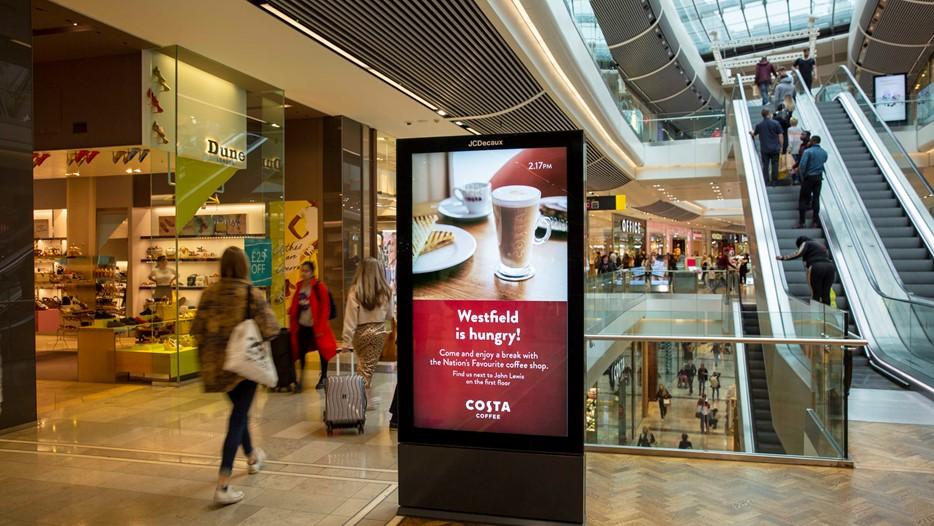For brands
Contextual Targeting with Outdoor Advertising
In our hyperconnected world, it’s more important than ever to stand out during key touchpoints of a consumer journey. Our inclination and ability to tune into stimuli that are relevant for us, often at the expense of other information, is what makes personalisation and targeting so powerful.
Perhaps unsurprisingly, advertisers have long been interested in how they can exploit this human tendency. The Accenture Interactive Personalized Marketing Index found that nearly 70% of consumers want companies to personalise their communications. Brands often seek to personalise content to grab consumer attention amid the background noise that surrounds us all.Personalisation has mostly been the domain of digital advertising, as the vast quantities of personal data, recorded by online websites, makes hyper-specific targeting relatively easy. On the other hand, growing public awareness of data misuse and the risk of breaches, combined with digital advertising fatigue, means that it is important for marketers to look to traditional media for other ways to cut through. A recent GroupM and Newsworks study showed that advertising in premium environments had a stronger ad recall of +19.2% higher, +10.5% in brand awareness and +9.7% in brand perception.
Out-of-home advertising (OOH) has several inherent advantages in this regard: broad reach, visual impact and capacity to incorporate local context into creative, which make it a strong medium for long term brand-building.
Of course, the mass reach of OOH also means it can be tough for advertisers to personalise creatives down to a one-to-one level. However, Delta Airlines and Misapplied Sciences are proving that personalisation in OOH might be easier than we think. Earlier this month, at CES, they unveiled Parallel Reality digital screens which provide tailored content for airport travellers including custom greetings, boarding times and airport information in any language.
Personalisation in OOH is still possible without advanced technology. One clever example was Coca-Cola, which ran a campaign with JCDecaux in Tel Aviv that invited people to download a location-based mobile app and enter their names. The app tracked these people’s location, and whenever they approached a series of digital billboards around the city, the screen would display the copy ‘Enjoy Coca-Cola with [name]’.
The campaign was a success – the app received over 100,000 downloads – because, despite the apparent focus on individuals, the copy had an inclusive message that was perfectly suited to OOH; but also because it used personalisation and localisation to encourage people to engage actively with the brand, rather than being served an advert that had been individualised based on previous behaviour.
Localisation is key for OOH. Brands have long used the situational context of an OOH asset as part of the creative – think of Burger King adverts telling you how close you are to the nearest branch. Posterscope research has revealed that 77% of consumers want to see adverts that are relevant to their location.

Now with digital out-of-home (DOOH), brands can use a technique called ‘targeted broadcast’ to reach groups of specific people, rather than individuals, using the dynamic capabilities of the medium to adjust copy and creatives in real-time.
To explore the benefits of contextual advertising, Costa Coffee worked with JCDecaux, creating various creatives which each had a different call to action. One was based on time of day, another on product offering contextual to time of day and the third was a locational specific callout. Each advert was located near a Costa Coffee outlet.

The study found that spontaneous ad awareness increased by 9% with a branding campaign and a notable 60% for the contextual campaign. It was also revealed that memorability is driven by context, as prompted ad attribution shot up by 22% for the contextualised ads.
What does this mean for personalisation in OOH? Certainly not that hyper-specific targeting can’t be an effective use of the medium – the Coca-Cola campaign in Tel Aviv and others like it show otherwise. But it raises questions about the appeal of OOH personalisation to consumers more generally. Do people want to be constantly targeted by a brand on an extremely specific level in OOH, as they are online? Or would they rather be connected to a wider urban group, which the Coca-Cola campaign also achieved?
These questions play to the strengths of OOH. Thanks to its mass reach and often-monumental status in cities, combined with dynamic capabilities that have been developed more recently, brands can use OOH to serve consumers with relevant location-based content – without targeting them too closely.



